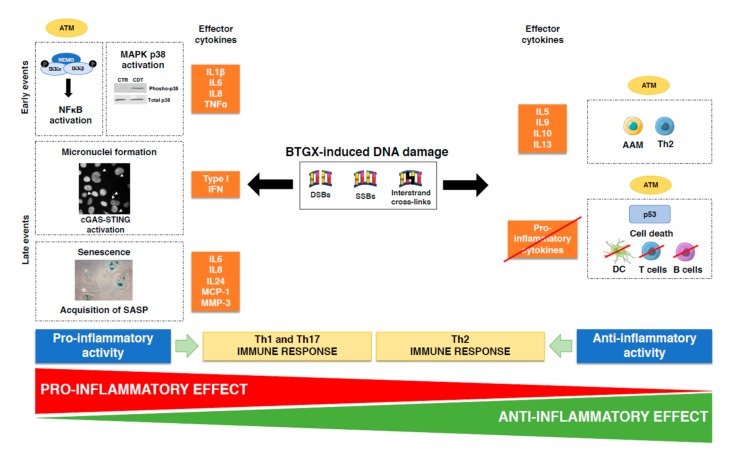Figure 5.
Cross-talk between activation of the DDR and the IR upon infection with genotoxin-producing bacteria. Infection with genotoxin-producing bacteria induce DDR activation. However, presence of damaged DNA will also be perceived as dangerous and trigger the host immune response, resulting in either pro-inflammatory or anti-inflammatory outcomes. Three events are linked to the pro-inflammatory profile of bacterial genotoxins (BGTX): (i) ATM-dependent NFκB activation and parallel MAPK p38 phosphorylation and consequent production of pro-inflammatory cytokines: IL1β, IL6, IL8, and TNFα; (ii) formation of micronuclei, which activates the cGAS-STING pathway, leading to secretion of type I IFN; (iii) acquisition of a senescence-associated inflammatory phenotype (SASP) leading to secretion of IL6, IL8, IL24, MCP-1, and MMP3. These pro-inflammatory cytokines will mainly coordinate activation of Th1 and Th17 responses. The anti-inflammatory properties of BTGXs are associated with: (i) ATM-dependent activation of T regulatory cells, alternatively activated macrophages (AAM) and Th2 cytokines (IL5, IL9, IL10, and IL13); (ii) induction of cell death and inhibition DCs, macrophages, and T lymphocytes activation.

